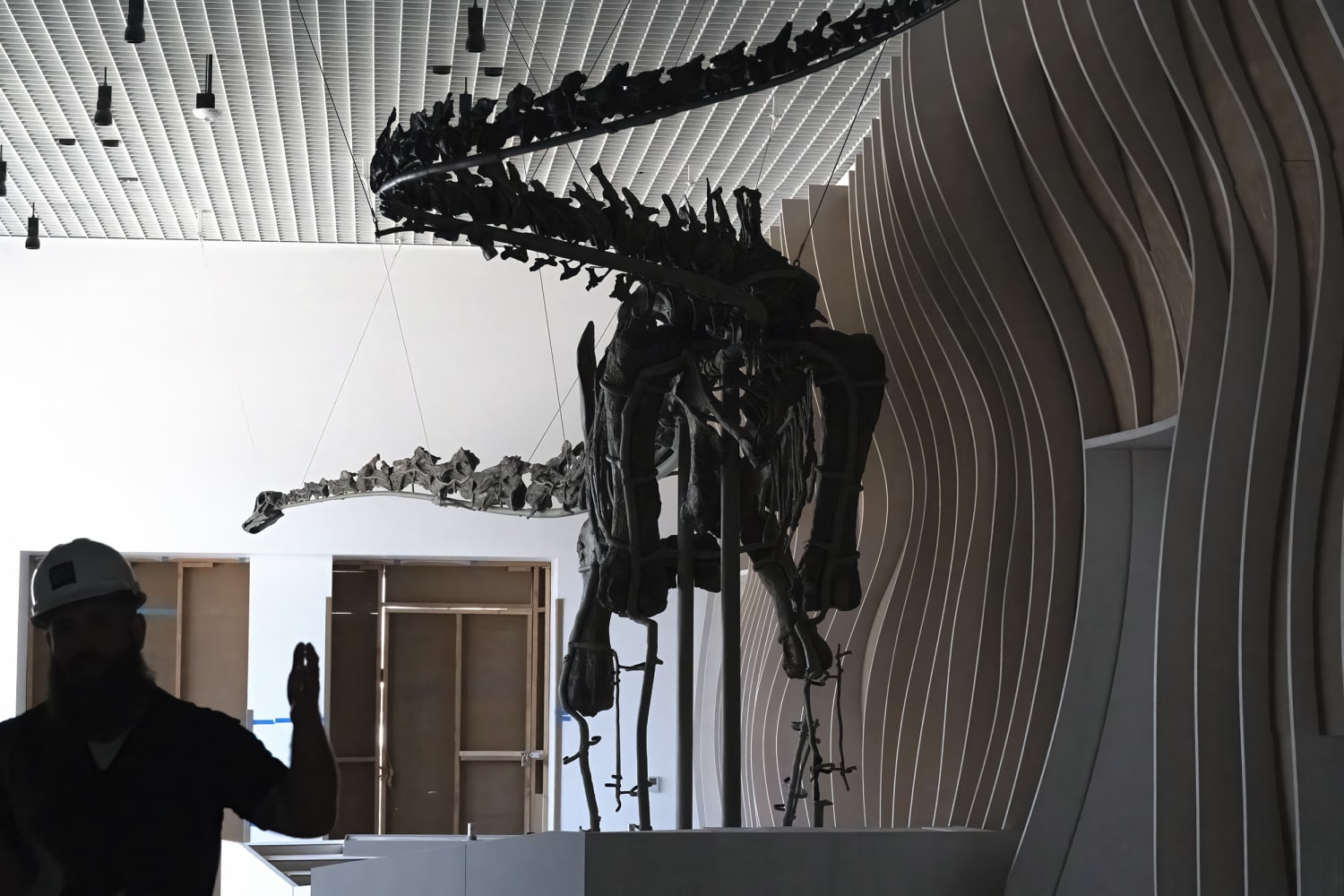LOS ANGELES — The newest dinosaur on display at the Los Angeles Museum of Natural History is not only a member of a new species, it's also the only one on the planet whose bones are green, according to museum officials.
Fossils of the long-necked, long-tailed herbivorous dinosaur were named “Gnatali” (pronounced Natalie) because of the mosquitoes that attacked it during excavations. The dinosaur fossils got their unique color, a mottled dark olive green, from the mineral celadonite during the fossilization process.
While fossils are usually brown from silica or black from iron minerals, green is rare because celadonite forms in volcanic or hydrothermal conditions that typically destroy buried bones. Celadonite entered the fossil record when volcanic activity about 50 to 80 million years ago made it hot enough to replace an earlier mineral.
The dinosaur lived 150 million years ago in the late Jurassic period, making it older than the Tyrannosaurus rex – which lived 66 to 68 million years ago.
Researchers discovered the bones in 2007 in the Badlands region of Utah.
“Dinosaurs are a great way to teach our visitors about the nature of science, and what better way to engage them in the process of scientific discovery than with an 80-foot-long green dinosaur and get them thinking about the wonders of the world we live in!” Louis M. Chiappe of the museum’s Dinosaur Institute said in a statement about his team’s discovery.
“I heard rumors of a green dinosaur as long ago as when I was in graduate school,” said Matt Weddle, an anatomist and paleontologist at Western University of Health Sciences in Pomona, near Los Angeles.
When he saw the bones being cleaned, he said they were “unlike anything I've ever seen before.”
The dinosaur resembles a type of dinosaur called a diplodocus, and the discovery will be published in a scientific paper next year. The dinosaur, which refers to a family of large herbivores that includes Brontosaurus and Brachiosaurus, will be the largest dinosaur at the museum and can be seen this fall in the new reception center.
“It's exciting to have such a complete skeleton to help fill in the gaps for less complete specimens,” said John Whitlock, who teaches at Mount Aloysius College, a private Catholic college in Cressson, Pennsylvania, and researches giant dinosaurs.
“It's so huge, and it really adds to our ability to understand taxonomic diversity… but also anatomical diversity,” Whitlock said.
The dinosaur was named “Gnatali” last month after the museum solicited a public vote on five options that included Verdi, derived from the Latin word for green; Olive, after the small green fruit that symbolizes peace, joy and strength in many cultures; Esme, short for Esmeralda, which means emerald in Spanish; and Salvia, an iconic green plant from Los Angeles that also grows in the Natural History Museum’s Nature Gardens.

“Extreme travel lover. Bacon fanatic. Troublemaker. Introvert. Passionate music fanatic.”







More Stories
A fossilized creature may explain a puzzling drawing on a rock wall.
MrBeast Sued Over ‘Unsafe Environment’ on Upcoming Amazon Reality Show | US TV
Watch comets Lemmon and SWAN approach Earth today